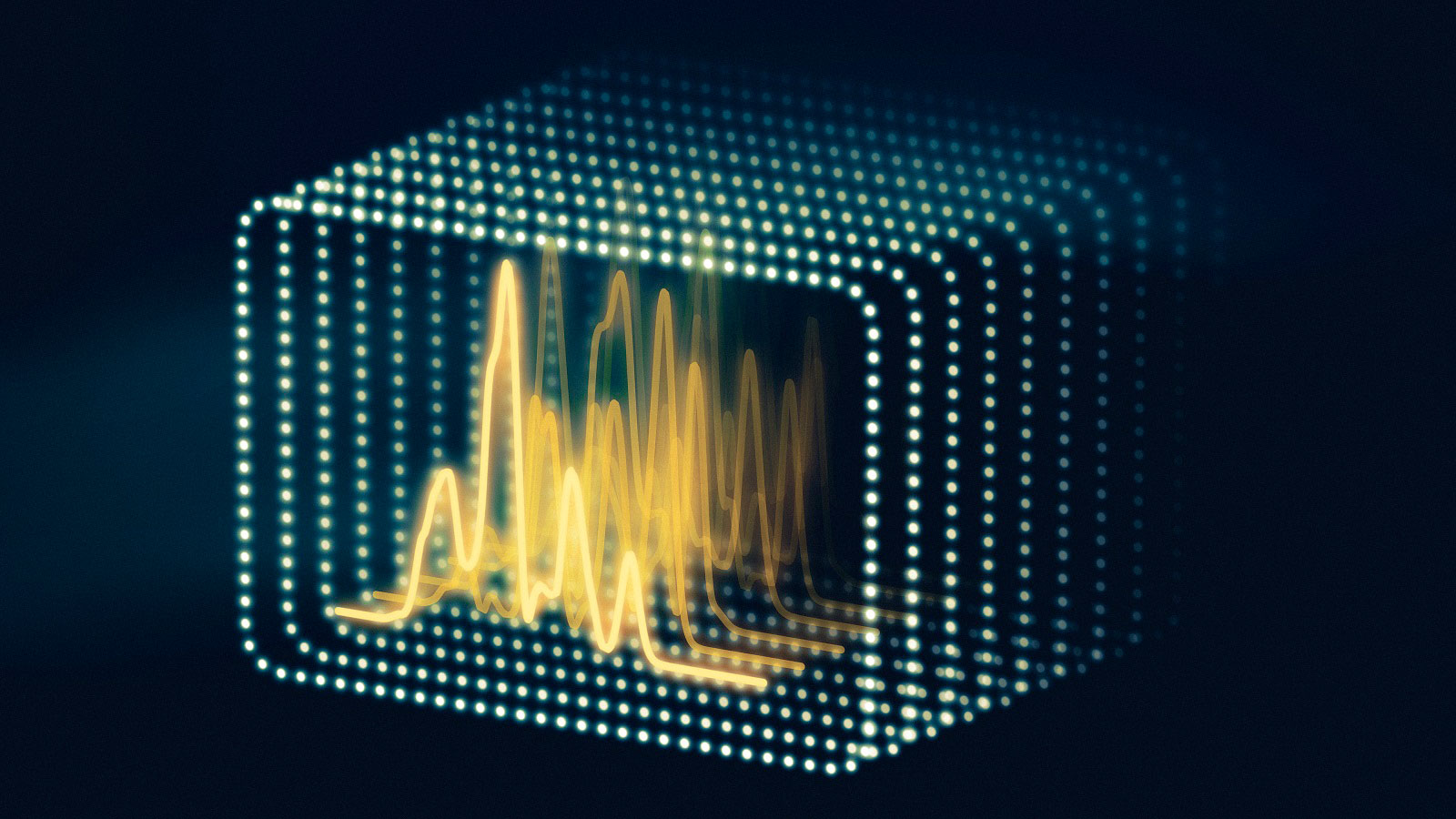Ghostly Images Could Ease Tracking of Fleeting Reactions
New method could enable studying the fastest interactions of ultrabright X-rays with matter, a vital way of learning about chemical reactions.

The Science
If you want snapshots of the fastest processes occurring in solar cells or during a chemical reaction, you’d probably use X-ray free-electron lasers. The lasers produce incredibly short and bright pulses of light that enable sharp images of fast-moving atoms. Now, computer simulations suggest a new, simple way to use the lasers to observe the fastest behavior at atomic scales. The secret is applying a method known as ghost imaging. Simulations show this method could provide another useful tool for studying ultrafast activities.
The Impact
In a typical X-ray pump-probe experiment, a “pump” pulse first excites a sample, and a time-delayed “probe” pulse measures how the system has changed during the delay. To map the full evolution of the system over time, scientists send pairs of X-ray pulses with lots of different time delays through a sample, creating a stop-motion movie of the tiny, fast motions. Producing two X-ray pulses with precisely controlled time delays can be difficult and time consuming. In their technique, called “pump-probe ghost imaging,” the team proposes using X-ray pulses directly from the laser without elaborate schemes to generate precisely timed pairs of pulses. It could save time and ease studies of fundamental interactions.
Summary
To know how molecules act over time, such as in a solar cell or chemical reactor, researchers have used pairs of X-ray free electron laser pulses to excite and track ultrafast changes. A major challenge is the nature of the light pulses created by the X-ray lasers. Each pulse from the free-electron laser actually consists of a train of narrow X-ray spikes whose intensities and temporal separation vary randomly. To counteract the random changes and to generate precisely timed pairs of X-ray pulses, scientists must establish difficult beam setups. Now, researchers at SLAC propose an approach that embraces the randomness. They use a method referred to as pump-probe ghost imaging. Many pairs of spikes within an individual X-ray pulse produce measurements at multiple random time delays. By measuring the random separation of the spikes within each pulse and repeating the measurements over many X-ray pulses, the team could show how the system changed over time, like a stop-motion movie, with time resolution much shorter than the duration of the X-ray pulses themselves. So far, the team has tested the idea in simulations. Experimental validation is needed.
Contact
Daniel Ratner
SLAC National Accelerator Laboratory
dratner@slac.stanford.edu
James Cryan
SLAC National Accelerator Laboratory
jcryan@slac.stanford.edu
T.J. Lane
SLAC National Accelerator Laboratory
tjlane@slac.stanford.edu
Funding
The Department of Energy (DOE) Office of Science supported this research through the Linac Coherent Light Source at the SLAC National Accelerator Laboratory (Office of Science, Basic Energy Sciences, Scientific User Facilities Division) and by the Office of Science, Basic Energy Sciences, Chemical Sciences, Geosciences, and Biosciences Division.
Publications
D. Ratner, J.P. Cryan, T.J. Lane, S. Li, and G. Stupakov, “Pump-probe ghost imaging with SASE FELs.” Physical Review X 9, 011045 (2019). [DOI: 10.1103/PhysRevX.9.011045]
Related Links
SLAC press release: Ghostly X-ray images could provide key info for analyzing X-ray laser experiments
Highlight Categories
Performer: DOE Laboratory , SC User Facilities , BES User Facilities , LCLS



